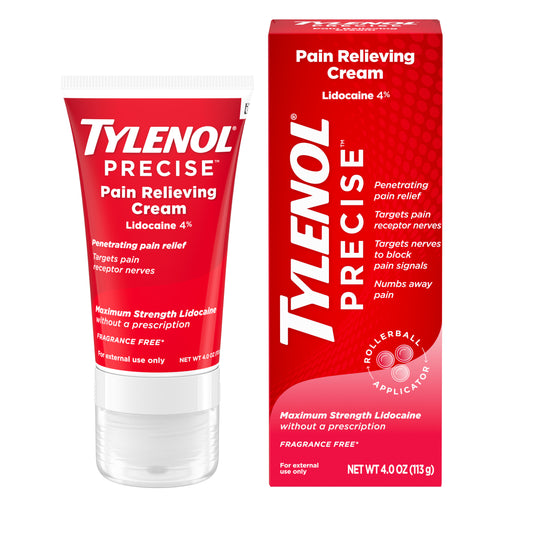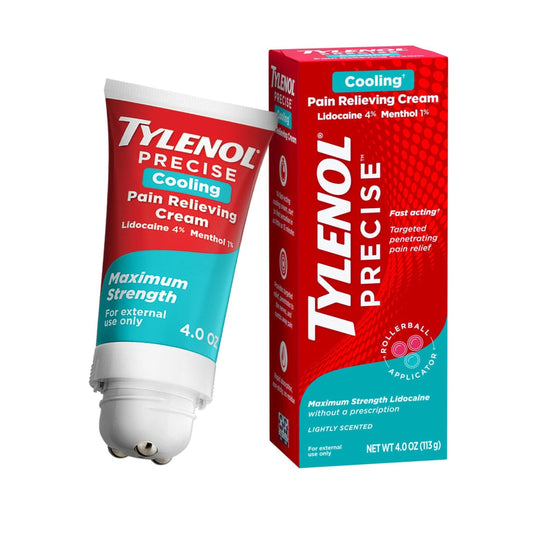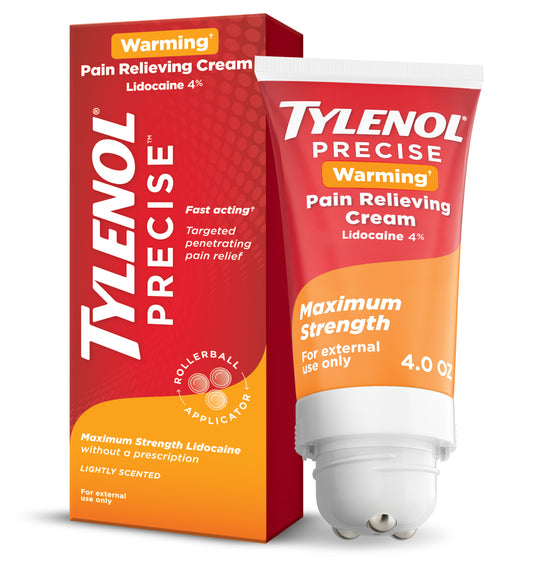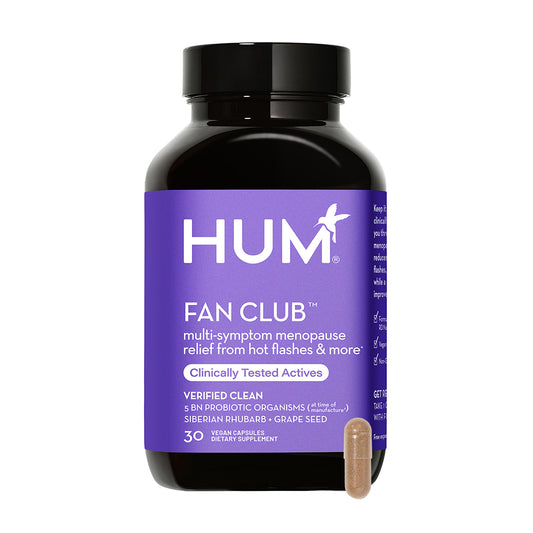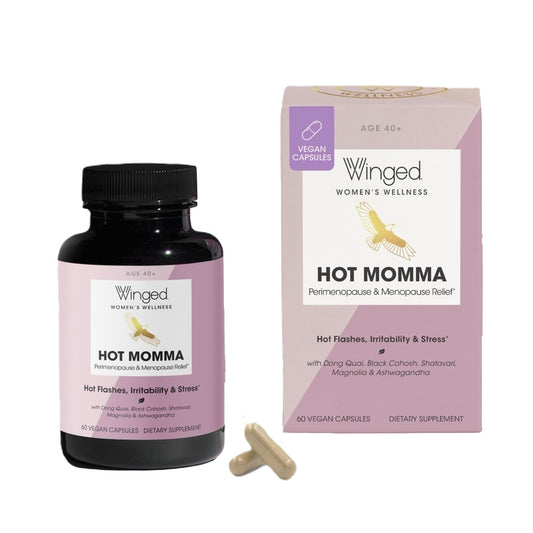A few weeks ago, out of the blue, my hip started to feel a bit achy. I don’t think I did anything specific to it. My regular exercise routine hadn’t changed, and I was still regularly doing strength training and yoga. So, what was going on?
It turns out, I might be experiencing yet another potential perimenopause/menopause symptom: hip pain! When I started digging into it, I learned about something called the musculoskeletal syndrome of menopause. This can involve losing muscle mass, bone density, and even an increase in osteoarthritis symptoms, all of which can lead to hip pain.
I checked in with my doctor, and they confirmed that the decrease in estrogen due to menopause is likely affecting my musculoskeletal system and causing me discomfort. More on that later in the article!
Let’s discuss hip pain
Hip pain is any kind of discomfort or tenderness you feel in or around your hip joint. It’s a common problem that can be caused by a variety of factors like getting older, injuries, arthritis, or issues with the soft tissues around your hip.
As you age, the cartilage that cushions your hip joint can start to wear down, leading to arthritis and stiffness. Other common causes of hip pain include bursitis, tendonitis, or muscle strain from overuse or sudden movements.
Hip pain can feel like a dull ache, sharp stabbing pain, or even a burning sensation. It often gets worse with movement or prolonged activity. Sometimes, it may also radiate down the leg or cause stiffness, making it difficult to walk or comfortably stand.
If you’re experiencing any of these symptoms, it’s a good idea to see a healthcare provider for a clear diagnosis. Your doctor may recommend imaging tests, like X-rays or an MRI, to rule out other conditions like osteoarthritis or damaged soft tissues.

The menopause-hip pain connection
Perimenopause is a time when your hormones are fluctuating. Estrogen, the hormone that plays a key role in many of your body’s functions, starts to decrease. This decrease in estrogen affects more than just your menstrual cycle. It also affects your bone density, joints, and muscles.
The connection between menopause and hip pain isn’t always obvious, but there are a few key factors that make people in perimenopause or menopause more susceptible to hip pain.
Decreased estrogen and joint health
Estrogen is essential for maintaining healthy bone and joint tissues, helping to keep cartilage flexible and reducing inflammation. As estrogen levels drop during menopause, cartilage can become less flexible, and the surrounding tissues may stiffen, putting more stress on the joints and making them more prone to inflammation and pain.
Estrogen also plays a role in maintaining the health of connective tissues, including ligaments, tendons, and joints, by stimulating the production of collagen, a protein essential for tissue health. With declining estrogen levels, the body may struggle to maintain flexible, healthy tissue, which can increase the risk of hip pain and other joint issues.
Reduced physical activity
As your body changes during menopause, staying active becomes more challenging. Hot flashes, sleep disturbances, and fatigue can all make it harder to keep up with your usual exercise routine.
Unfortunately, when you’re less active, your muscles and joints can become weaker and less flexible. This can make pain in areas like your hips worse. A sedentary lifestyle can also contribute to weight gain, putting additional stress on your hips.
Inflammation
Menopause is often associated with increased inflammation in the body. Estrogen helps regulate the inflammatory response and reduced estrogen levels can lead to more inflammation.
Managing musculoskeletal symptoms (including hip pain) during menopause
 If you’re dealing with symptoms during menopause, you don’t have to suffer in silence. Here are some strategies to help manage the pain and keep your joints functioning well. Be sure to talk to your doctor if you have any specific questions or concerns.
If you’re dealing with symptoms during menopause, you don’t have to suffer in silence. Here are some strategies to help manage the pain and keep your joints functioning well. Be sure to talk to your doctor if you have any specific questions or concerns.
- Pain relief. For acute (short-term) pain, over-the-counter anti-inflammatory medications like ibuprofen can temporarily reduce minor aches and pain. If your pain is persistent, your doctor might recommend corticosteroid injections or a visit to a physical therapist to manage the inflammation and improve mobility.
- Supportive footwear. Believe it or not, the right shoes can make a huge difference in how your hips feel. Shoes with good arch support and cushioning can help improve your posture and reduce the pressure on your hips while walking or standing.
- Physical therapy. Physical therapy can be a helpful way to manage musculoskeletal issues, like hip pain. It works by building up your strength, improving your flexibility, and improving joint mobility. Through specific exercises, hands-on therapy, and learning better ways to move, physical therapy can help ease your pain, enhance function, and prevent further injuries.
- Exercise and stretching. Regular exercise is one of the best ways to support joint health. Low-impact exercises like swimming, cycling, or walking can help strengthen the muscles around your hips without putting extra stress on the joints. Stretching is also crucial for maintaining flexibility, increasing your range of motion, and preventing stiffness. Stretch your hips, lower back, and legs to help keep everything moving smoothly.
- Weight management. Maintaining a healthy weight is important for overall joint health. Even a modest weight loss can reduce the strain on your hips and decrease inflammation in the body. Talk to your doctor or a nutritionist for advice on how to approach weight management in a way that’s sustainable and healthy for you.
- Stay positive and patient. Managing hip pain can be frustrating. But it’s important to stay positive and patient with yourself. This is a time of transition, and just like your body changes in other ways, you’ll need to adapt your lifestyle to stay comfortable and healthy. Embrace this new chapter with the knowledge that you can manage the physical challenges that come with it.
 Now that I know more about the causes and some strategies for managing my mild hip pain, I’m no longer discouraged. I hope the same goes for you.
Now that I know more about the causes and some strategies for managing my mild hip pain, I’m no longer discouraged. I hope the same goes for you.
For me, continued exercise, proper footwear, stretching, and patience have made a world of difference. You don’t have to live with the pain — there are plenty of options available to help you feel better and move more freely.
FAQs
What is hip pain?
Hip pain is that uncomfortable or achy feeling you get in or around the hip joint. It can come from a variety of things, like an injury, inflammation, or just the wear and tear that happens over time. Common culprits include arthritis, bursitis, tendonitis, or even a simple muscle strain. As you get older, especially during menopause, hip pain can become more common because of decreased bone density and hormonal changes affecting joint health. The pain can feel sharp, dull, or even throbbing, and it often gets worse when you move a lot or stay active for a long time. Sometimes, the pain can even travel down your leg, making it stiff and hard to walk or stand.
Can menopause cause joint pain?
Menopause can cause joint pain because of declining estrogen levels, which affect inflammation and joint health. Many people experience discomfort, swelling, pain, and stiffness, often called "menopausal arthritis”. Regular exercise, a healthy diet, and staying hydrated can help manage symptoms.
What are some treatment options for hip pain?
Treatment options for hip pain may include rest, ice therapy, and over-the-counter anti-inflammatory medications. Physical therapy and stretching exercises can help improve flexibility and reduce pain. In severe cases, corticosteroid injections or, rarely, surgery may be recommended.
References
Ahuja, V., Thapa, D., Patial, S., Chander, A., & Ahuja, A. (2020). Chronic hip pain in adults: Current knowledge and future prospective. Journal of Anaesthesiology Clinical Pharmacology, 36(4): 450-457. doi: 10.4103/joacp.JOACP_170_19
Bogdanis, G.C. (2012). Effects of physical activity and inactivity on muscle fatigue. Frontiers in Physiology, 3: 142. doi: 10.3389/fphys.2012.00142
Boureau, F., Schneid, H., Zeghari, N., Wall, R., & Bourgeois, P. (2004). The IPSO study: Ibuprofen, paracetamol study in osteoarthritis. A randomised comparative clinical study comparing the efficacy and safety of ibuprofen and paracetamol analgesic treatment of osteoarthritis of the knee or hip. Annals of the Rheumatic Diseases, 63(9): 1028-1034. doi: 10.1136/ard.2003.011403
Chidi-Ogbolu, N. & Baar, K. (2019). Effect of estrogen on musculoskeletal performance and injury risk. Frontiers in Physiology, 9: 1834. doi: 10.3389/fphys.2018.01834
Fullen, B.M., Wittink, H., De Groef, A., Hoegh, M., McVeigh, J.G., Martin, D., & Smart, K. (2023). Musculoskeletal pain: Current and future directions of physical therapy practice. Archives of Rehabilitation Research and Clinical Translation, 5(1): 100258. doi: 10.1016/j.arrct.2023.100258
Khosla, S., Oursler, M.J., & Monroe, D.G. (2012). Estrogen and the skeleton. Trends in Endrocrinology & Metabolism, 23(11): 576-581. doi: 10.1016/j.tem.2012.03.008
Paterson, K.L., Bennell, K.L., Metcalf, B.R., Jones, S.E., Campbell, P.K., McManus, F., Lamb, K.E., & Hinman, R.S. (2023). Shoes for self-managing chronic hip pain: The SCHIPP randomized clinical trial protocol. BMC Musculoskeletal Disorders, 24: 141. doi: 10.1186/s12891-023-06235-x
Poudel, P. & Lappin, S.L. (2023). Inflammatory arthritis. In: StatPearls [Internet]. Treasure Island (FL): StatPearls Publishing; 2025 Jan-. Accessed 3/14/2025 from https://www.ncbi.nlm.nih.gov/books/NBK507704/
Wright, V.J., Schwartzman, J.D., Itinoche, R., & Wittstein, J. (2024). The musculoskeletal syndrome of menopause. Climacteric, 27(5): 466-472. doi: 10.1080/13697137.2024.2380363.


